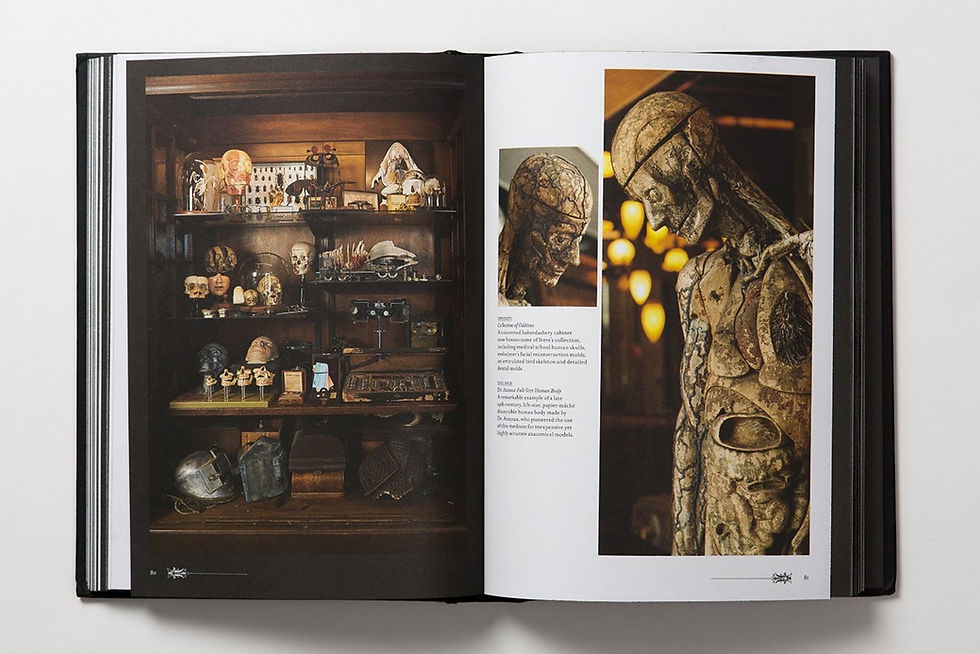Review - Morbid Curiosities: Collections of the Uncommon and the Bizarre Hardcover by Paul Gambino
- Paige Manning

- Aug 1, 2021
- 3 min read

Image Source: Amazon Listing
People love museums for so many reasons; they love history, they love the community building, they believe education should be accessible for all, and so many other reasons. These are all amazing reasons to love museums, but if you are like me, you love museums cause you like things. Old things, historical things, weird things, just things! I love objects, and I especially love how people and cultures for centuries have imparted such unique meanings onto items, imbuing them with such power, and conserving them for the future. This is why books like ‘Morbid Curiosities: Collections of the Uncommon and the Bizarre’ appeal to me so much, as it exhibits 18 collectors with their own treasure troves of the weird, wonderful, and questionable. These people collect not for money and fame, but for the joy of it.
I myself have a modest collection of strange things I love, such as old daggers and swords, a rabbit’s foot, and artwork of Marlene Dietrich. However, compared to the collectors in this book, my collection is child plays. The collectors scrub all avenues available such as dark markets and private auctions for the rare and the valuable, spending 1000’s of their own money to add to their growing personal cabinet of curiosities. Some of the collections include historical medical equipment, taxidermy, occult objects, and mummified body parts. Each interviewee expresses their love and dedication to their collections; as well as their desperate need to keep it growing.

Image Source: Amazon Listing
The book is lavish in its photograph, showing in-detail close-up shots of oddities as well as large scenes that take in the complexity of it all. The pictures are beautiful, but I must confess that when reading the book, however fascinating it was, there were questions I longed to ask. Many of the collectors have and own human remains, ranging from skeletons, wet preserved organs, and remains that had had skill applied to them from the cultures they came from. The collectors were majority white and from America, and knowing that most human remains on the market and shown in museums were historically taken through colonisation and the destruction of indigenous peoples lives I questioned the mortality of it all. How did these items make it to these places? Who were they when alive? Would this of been what they wanted, to be in some persons collection so different from their own home and culture?

These questions can very rarely be answered, and these are private collectors so, as long as they are working within the law, they can do what they want. But that does not mean that questions should not be raised about the mortality of retaining these items. The book itself does not go into the morality of owning such items, more focusing on the oddity of it all. Although I enjoyed the book, I think it was a missed step to not include these ideas. This is not to say that people should not collect the weird and odd - personally, I live for it -- I just think that, especially with our modern understandings of colonisation and ethics, that we should be more thoughtful of the collection of human remains, especially ones from historically oppressed peoples.
Overall, a good book for a peek into beautiful private collections that are loved and preserved by those who dedicate their lives to them. Nonetheless, one that raises questions that, sadly, never really get answered.
Written by Paige Manning







Comments